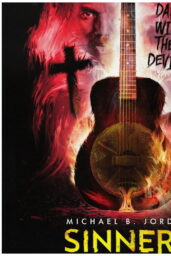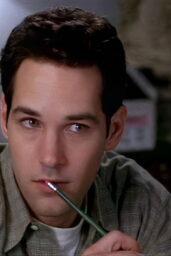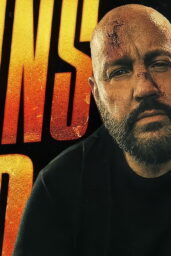Just when you thought vampires were out of style, they're back with a vengeance. “Sinners” and “Nosferatu” have not only dominated the box office but also reignited interest in a genre that seemed to be fading into the shadows. These films aren't just hits—they're a signal that vampire movies are ready for a full-blown resurgence, like a bloodthirsty count rising from his coffin.
Box Office Triumphs
“Sinners,” directed by Ryan Coogler, opened at #1, grossing $87 million in its first week, nearly recovering its $90 million budget (ScreenRant). Starring Michael B. Jordan in dual roles as twin brothers in a Jim Crow-era vampire thriller, the film's intense plot and stellar supporting cast, including Hailee Steinfeld and Jack O'Connell, have earned it critical acclaim. Meanwhile, “Nosferatu,” directed by Robert Eggers, has grossed $181.3 million on a $50 million budget. A reimagining of the 1922 silent classic, it delivers Eggers' signature haunting style and opened strong despite competition from “Sonic the Hedgehog 3” and “Mufasa: The Lion King.”
These successes stand in stark contrast to recent vampire movie struggles. The early 2020s saw several high-profile flops:
| Movie Title | Budget | Domestic Opening Weekend | Worldwide Gross | Notes |
|---|---|---|---|---|
| Renfield | $65 million | $8 million | $26.8 million | Comedic approach failed to connect; mixed reviews |
| The Last Voyage of the Demeter | $45 million | $6.5 million | $21.8 million | Slow pacing; disappointing opening |
| Abigail | $28 million | $10.2 million | $42.8 million | Positive reviews but poor marketing |
| Morbius | $75 million | Not specified | $167 million | Mixed reviews; became a meme |
| The Invitation | $10 million | Not specified | ~$40 million | Modest success; negative reviews |
A Cyclical Genre
The vampire genre has always been cyclical, surging and fading like the tides. The late 2000s and early 2010s were dominated by the Twilight Saga, with films like “The Twilight Saga: Eclipse” grossing $300.5 million domestically and “New Moon” earning $296.6 million (Box Office Mojo). These teen-oriented romances captivated audiences but left horror fans wanting more. The family-friendly “Hotel Transylvania” series filled some of the gap, with “Hotel Transylvania 2” grossing $169.7 million in 2015 and “Hotel Transylvania 3” earning $167.5 million in 2018.
However, darker vampire films struggled. The “Underworld” series, once a staple, saw declining returns, with “Underworld: Blood Wars” earning just $30.4 million in 2017. Other attempts, like “Vampire Academy” (2014), grossed a mere $7.8 million. Analysts pointed to “vampire fatigue,” suggesting audiences were tired of overused tropes and less scary modern interpretations (CBR).
Why ‘Sinners' and ‘Nosferatu' Work
What sets “Sinners” and “Nosferatu” apart is their commitment to horror and serious storytelling. “Sinners” blends supernatural terror with historical tension, tackling themes like racism in the Jim Crow South. “Nosferatu” delivers a chilling, atmospheric reimagining of a classic, leveraging Eggers' meticulous craftsmanship. Both films benefit from acclaimed directors and talented casts, ensuring performances that resonate—Michael B. Jordan's dual roles in “Sinners” and the eerie ensemble of “Nosferatu” are standout examples.
This focus on horror contrasts with recent comedic or teen-oriented vampire films. “Renfield” tried to blend humor with horror but failed to find an audience, while “Abigail” suffered from poor marketing despite positive reviews. “Sinners” and “Nosferatu” take themselves seriously, delivering fear that feels fresh and urgent, like a stake through the heart of a tired genre.
Looking Ahead
The vampire genre's future looks promising, with several high-profile projects on the horizon. “Dracula: A Love Tale,” directed by Luc Besson and starring Caleb Landry Jones as Dracula and Christoph Waltz, is set for release on July 30, 2025 (IMDb). This gothic horror film focuses on the love story between Dracula and his wife, a narrative thread inspired by Francis Ford Coppola's 1992 adaptation. With Besson's flair for visual storytelling and a budget of €40 million, it could be a critical and commercial hit.
Other projects include “Flesh of the Gods,” starring Kristen Stewart and Oscar Isaac, and “Brides,” featuring scream queen Maika Monroe. These films suggest a shift toward adult horror, moving away from the teen dramas that dominated the Twilight era. Stewart's history with “Twilight” could draw audiences, while Monroe's horror credentials might attract genre fans.
Historical Context and Cultural Significance
Vampire movies have always reflected cultural anxieties. In the 1990s, “Interview with the Vampire” and “Bram Stoker's Dracula” explored themes of mortality and desire. The 2000s Twilight Saga tapped into teen romance and identity. Today, “Sinners” and “Nosferatu” seem to channel a desire for darker, more grounded stories, perhaps reflecting a post-pandemic craving for raw, visceral experiences.
The genre's cyclical nature suggests this resurgence could fade if studios revert to lazy tropes. Past flops like “Morbius” and “Renfield” show that audiences reject half-baked concepts. However, the success of “Sinners” and “Nosferatu” proves that high-quality vampire horror can still captivate, provided filmmakers respect the genre's roots.
The Bigger Picture
If “Sinners” and “Nosferatu” had flopped, studios might have abandoned vampire movies, assuming the genre was no longer profitable. Instead, their success has likely convinced Hollywood to double down. Vampires are a versatile storytelling device, capable of exploring everything from love to fear to social issues. As long as filmmakers continue to innovate, the genre could enter a new golden age.
But there's a catch. The vampire genre thrives on reinvention, and repeating the same formula could lead to another lull. The upcoming “Dracula: A Love Tale” and other projects will need to balance homage to classics with fresh perspectives. If they succeed, vampire movies could dominate the box office for years to come. If they fail, we might be back to counting the years until the next resurgence.
So, what's your take? Are you ready to sink your teeth into more vampire horror, or is the genre still one bite away from greatness? Share your thoughts below.











